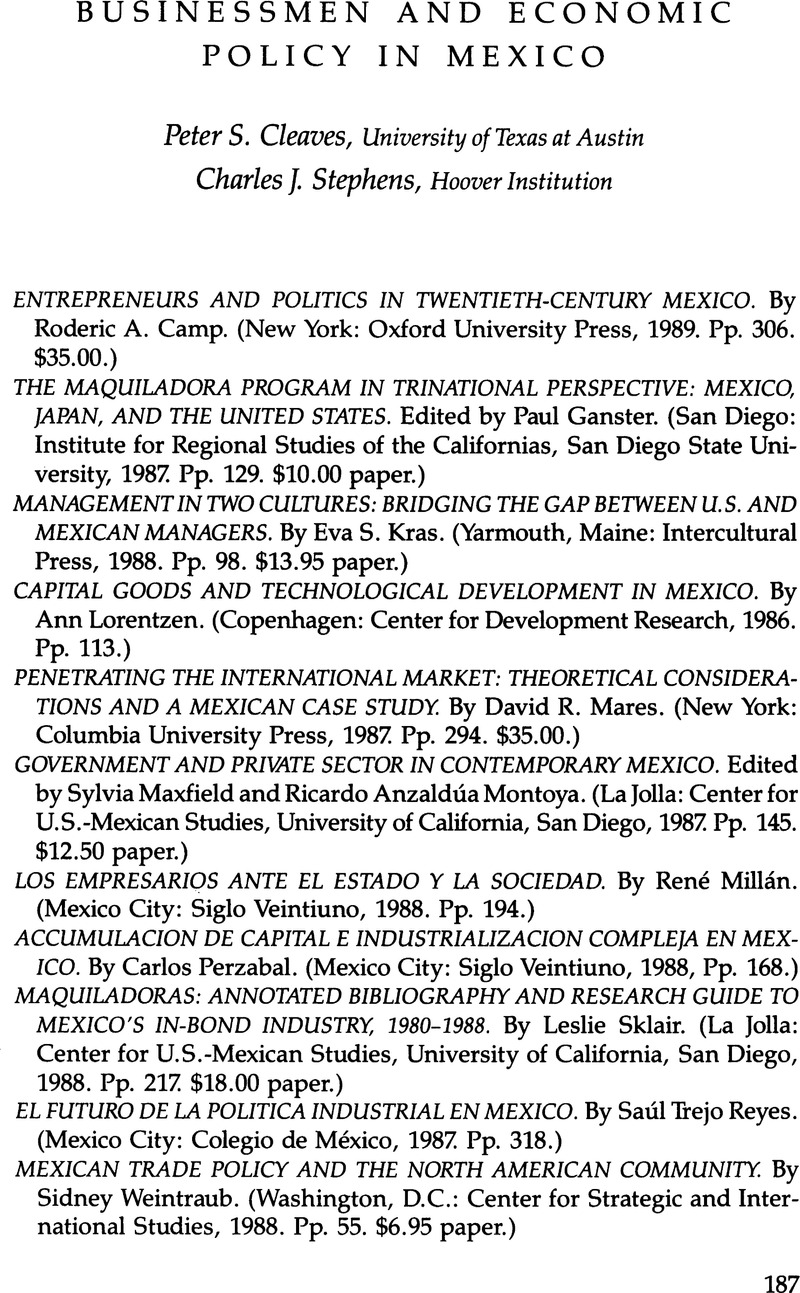Published online by Cambridge University Press: 12 October 2022

1. Statistics from the Secretaría de Hacienda y Crédito Público, as cited in Luis Pazos, ¿Hacia dónde va Salinas? (Mexico City: Editorial Diana, 1989).
2. Trejo Reyes, El futuro de la política industrial, 157
3. Data from the Centro de Estudios Económicos del Sector Privado, cited in “Salinas Economics Rated,” The News (Mexico City), 17 Dec. 1989, p. 43.
4. Banco de México, “Deuda externa total y su servicio,” El Financiero, 15 Dec. 1989, p. 6; see also “Domestic Debt, Too, Hurts Mexico,” The New York Times, 5 June 1989, p. 5.
5. Pazos, ¿Hacia dónde va Salinas?, 20; and “Parastate Subsidies Revised,” The News, 11 Dec. 1989, p. 1.
6. The International Bank for Reconstruction and Development, World Development Report 1986 (New York: Oxford University Press, 1986), 181; also, Institute of International Finance, Comparative Country Statistics (Washington, D.C.: Institute of International Finance, 1989), 23.
7. Secretaría de Hacienda y Crédito Público, in Pazos, ¿Hacia dónde va Salinas?
8. “Mexico's Capital Flight Still Racks Economy,” The Wall Street Journal, 25 Sept. 1989, p. 1.
9. See Peter S. Cleaves, Professions and the State: The Case of Mexico (Tucson: University of Arizona Press, 1987), 28–35.
10. This finding is consistent with the experience of General Products S.A., a chemical company in Mexico City partially owned and managed by coauthor Charles J. Stephens.